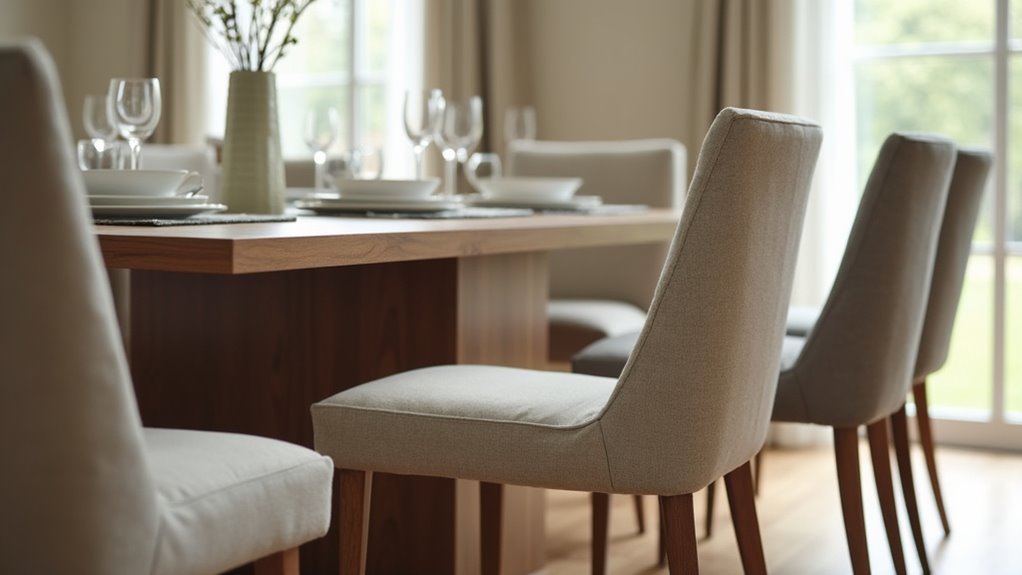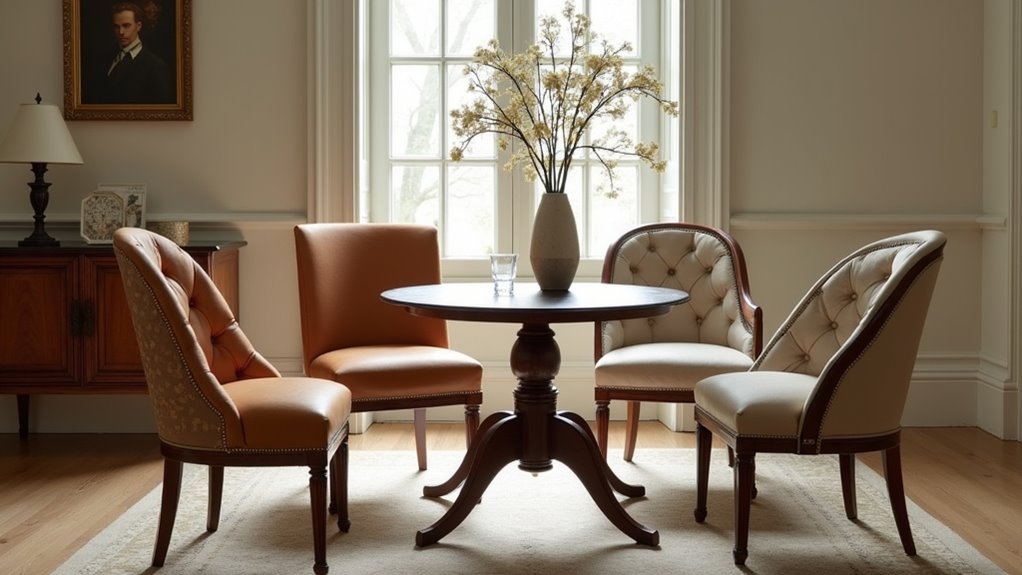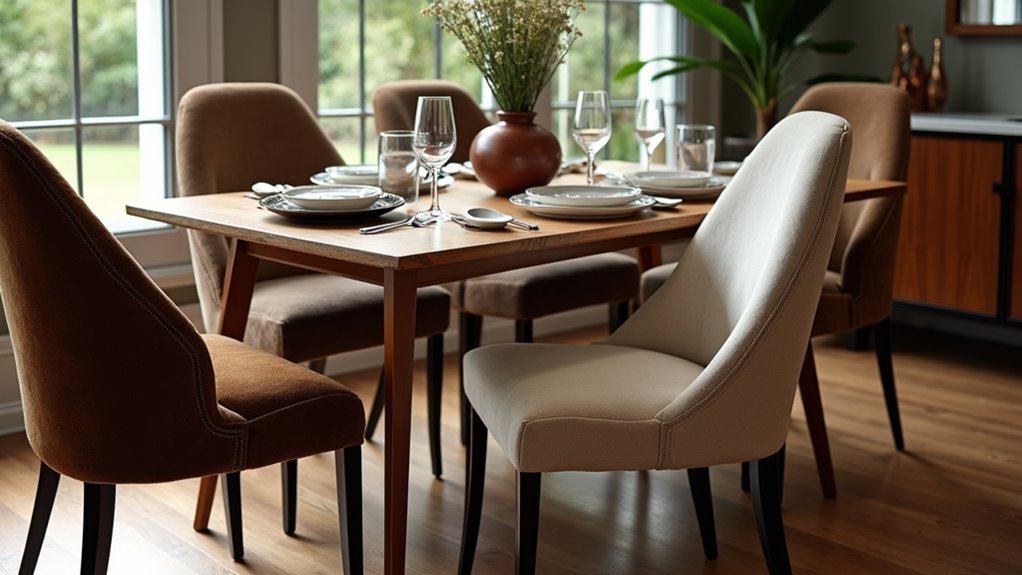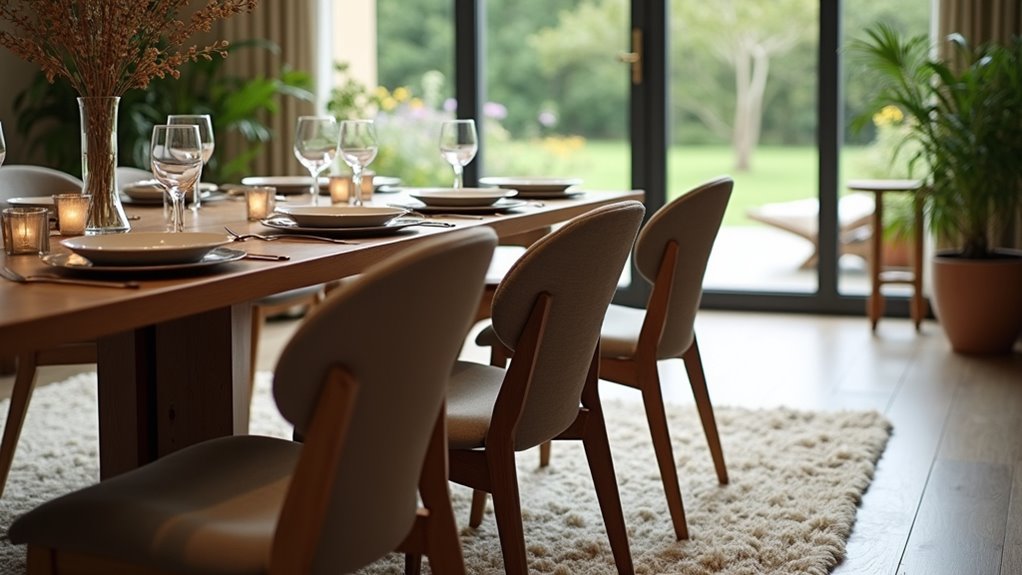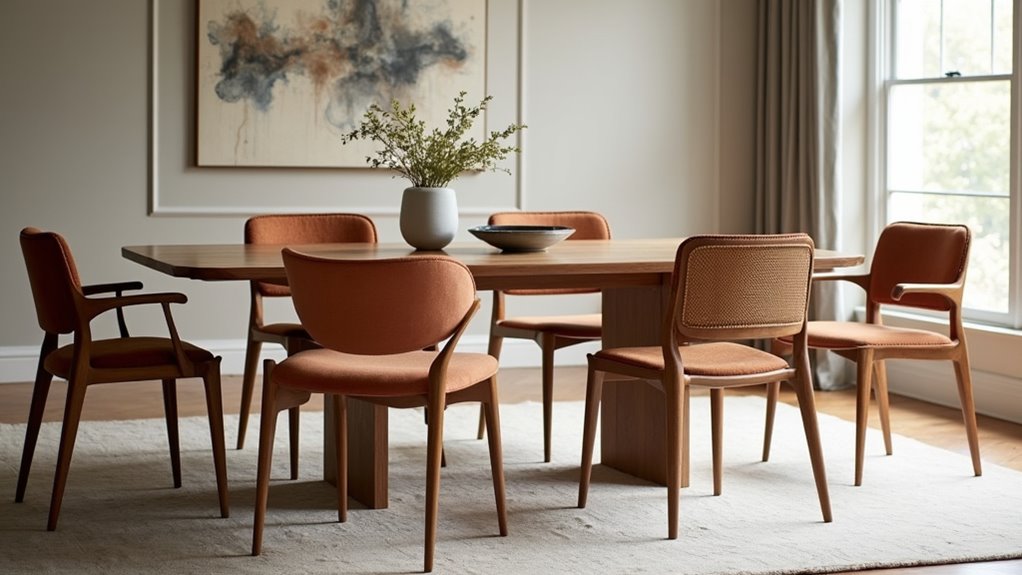Measuring dining chair cushions involves three key steps for accuracy and comfort. First, use a carpenter’s tape to measure the width at the seat’s widest point, adding 3-4 inches for fabric folding. Next, measure the depth from front to back, ensuring center accuracy. Finally, calculate the height by considering the cushion thickness of 2-3 inches, accounting for any compression. Proper measurements ensure a snug fit, elevating style and comfort in your dining area. More insights await.
Key Takeaways
- Measure the seat’s widest point, adding 3-4 inches for fabric folding when reupholstering.
- Assess depth from the front to the back, focusing on center measurement for odd shapes.
- Determine chair height by measuring from the seat to the desired cushion thickness.
- Use templates for uniquely shaped seats to ensure accurate and custom-fit measurements.
- Consider ergonomic seat-to-table distances for enhancement of comfort and dining experience.
Essential Tools and Preparation
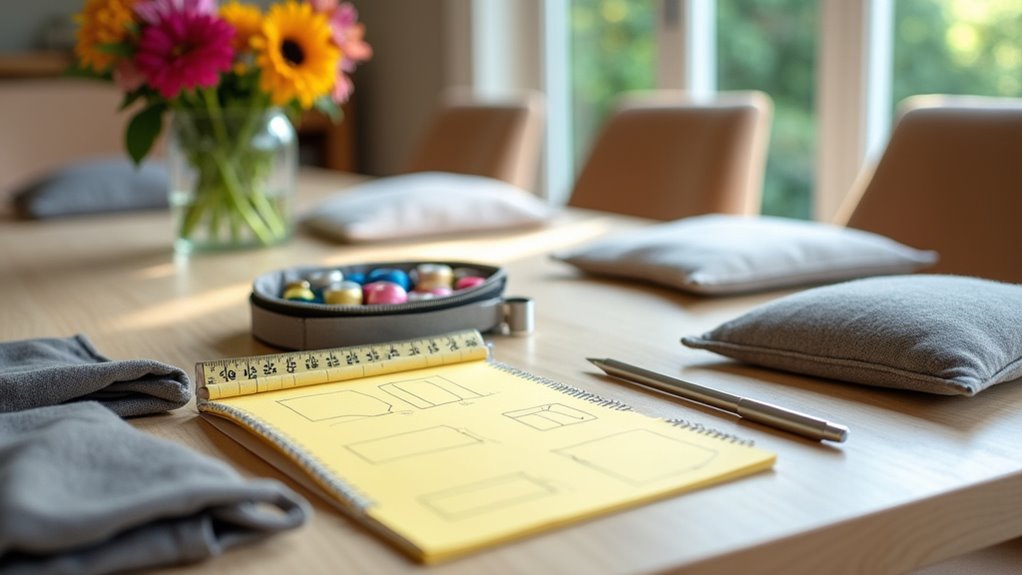
Although measuring dining chair cushions may seem straightforward, selecting the right tools and preparing the workspace is crucial for achieving accurate results. A firm carpenter’s tape measure is recommended for precision, while flexible tape measures prove beneficial for curved chair designs. For straight measurements, a reliable yardstick becomes indispensable. Recording measurements on pen and paper ensures seamless tracking, while fluorescent lighting aids in visual clarity. Before commencing, ensure the chair is clean and level, and if applicable, remove the existing seat for enhanced accuracy. Notably, avoid measuring old cushions, as they may be misshaped. Measuring the chair to obtain accurate dimensions for new cushions is essential for achieving a perfect fit. Additionally, ensure that accurate measuring is prioritized as it guarantees a proper cushion fit, enhancing both comfort and style in your dining area. Understanding different cushion types can also influence measurement strategy, ultimately leading to a tailored fit that enhances comfort and aesthetics in dining spaces—an essential detail for effective measuring tips.
Step 1: Measuring the Width of the Chair Seat
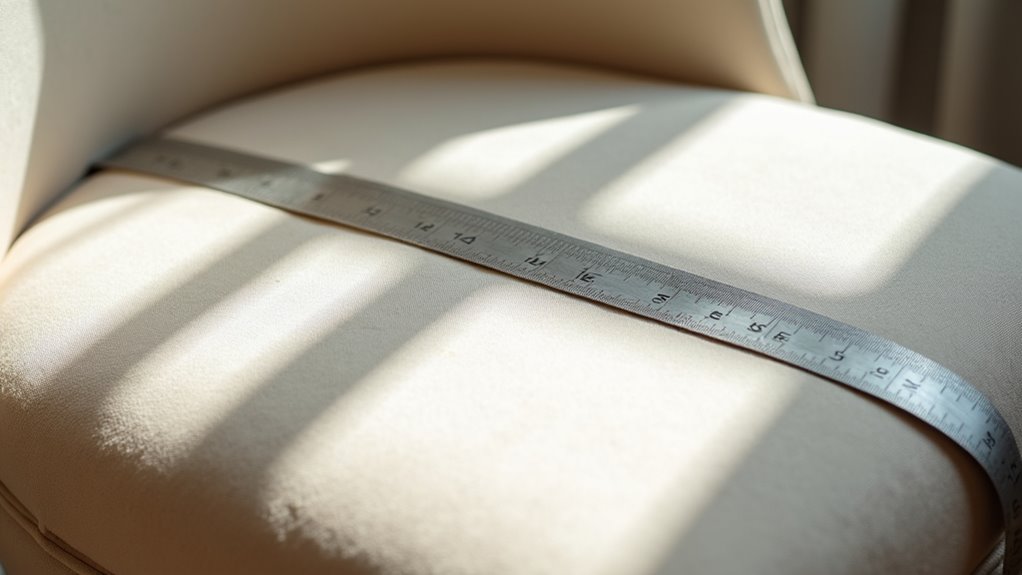
Measuring the width of a chair seat requires meticulous attention to detail to ensure a perfect fit for cushions. The process begins by identifying the seat’s widest point, typically located at the front. Utilizing precise measuring techniques, one should measure across this section from one edge to the other, ensuring accuracy. For non-standard shapes, such as trapezoidal or rounded designs, it is vital to account for their unique dimensions. Additionally, avoid measuring old cushions, as they may be compressed. When reupholstering, add 3-4 inches on each side to allow for fabric folding. Maintaining an ideal seat-to-table distance is critical for enhancing comfort and ensuring ergonomic support in your dining space. Capturing this width measurement accurately guides the selection of appropriate cushion sizes, essential for achieving both comfort and aesthetic appeal in any dining space.
Step 2: Measuring the Depth and Height of the Chair Seat
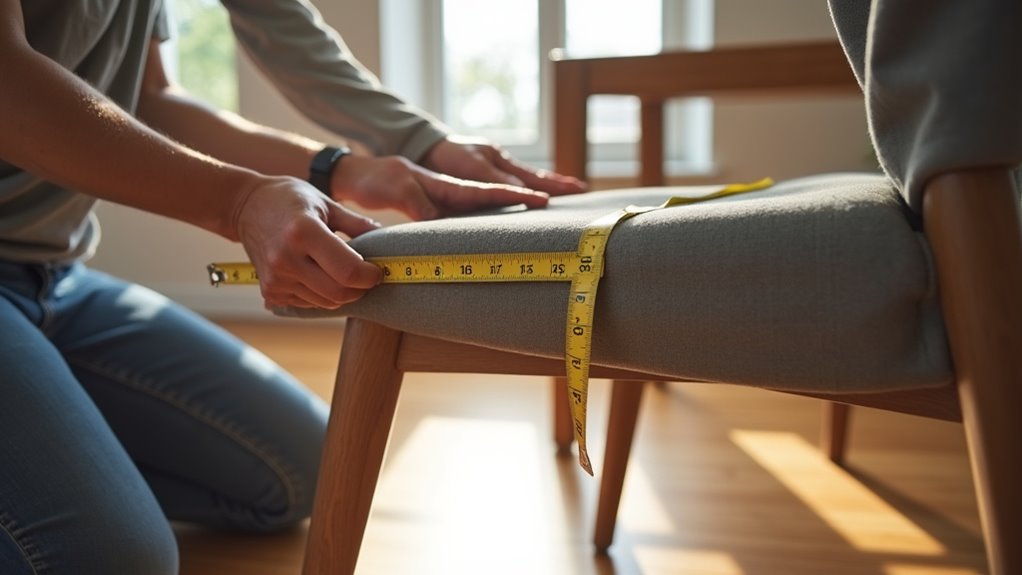
Accurate measurement of the chair seat’s depth and height is essential in creating cushions that enhance both comfort and style. To achieve this, one must perform a precise depth measurement by measuring from the front of the chair seat to the rear, ensuring to measure from the center for trapezoid-shaped seats. The cushion thickness typically ranges from 2 to 3 inches, with deeper seating requiring additional thickness. Utilizing a carpenter’s tape for accuracy is recommended. Below is a concise guide to assist in the measurement process:
| Measurement Type | Instruction | Notes |
|---|---|---|
| Depth Measurement | From front to back | Measure at the center for trapezoids |
| Height (Cushion) | Standard thickness: 2-3 inches | Consider compressed thickness in final height |
| Firmness | Thinner cushions require firmer foam | Impact on comfort and support |
| Additional Notes | Be aware of unique shapes | Create templates for custom fits if needed |
Incorporating high-density foam in your cushion design ensures long-lasting comfort and supports healthy dining habits over extended periods.


